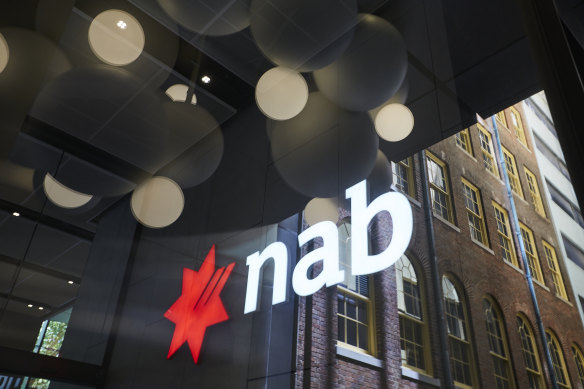
NAB takes 1000 calls a day from worried customers as rate rises bite
Save articles for later
Add articles to your saved list and come back to them any time.
National Australia Bank has revealed it is taking more than 1000 calls a day from customers who are worried about their finances, a number that has risen slightly in the past six months as repeated interest rate rises begin to take their toll.
The number of people reaching out to the bank is still lower than during the worst of the pandemic and can be for a range of reasons, such as relationship break-ups, the death of a partner, health issues or gambling problems.
About 90 per cent of those who contact NAB saying they are in financial difficulty are back on track within 90 days.Credit: Natalie Boog
However, the increase over the past six months is likely most attributable to more people feeling the pinch following the 12 increases in interest rates since May last year.
Mike Chambers, head of financial vulnerability and financial health at NAB, stresses the importance of contacting the bank if your circumstances change in ways that strain your finances. He says the bank works with customers to help them get through difficulties and that no one should feel embarrassed about getting in contact.
“About 90 per cent [of those who reach out] are back on their feet in 90 days if it is related to financial difficulty,” he says.
Banks beefed up their resources to assist customers during COVID-19, with more staff employed purely to aid customers who are feeling the pinch.
They can monitor for tell-tale signs that customers are under acute financial pressure, such as when they make payments to multiple “buy now, pay later” providers or use “payday” loans. “We want to make sure we get there to help them … before they get into a debt trap,” Chambers says.
The bank’s assistance is helping to ensure NAB’s mortgage customers and other customers do not fall into repayment arrears in the first place, or get back on track quickly.
NAB chief executive Ross McEwan told the House Standing Committee on Economics in Canberra earlier this month that there was some “some stress in the system” following a period of rising cost of living and interest-rate increases.
However, the bank’s mortgage customers were, on average, 41 months ahead on their payments. “We’ve seen an uptick in 30-, 60- and 90-day delinquencies, but the levels we’re seeing are below the 10-year average,” he said. “It’s been very surprising,” McEwan said.
A survey of Australians – not just NAB customers – by NAB found cost-of-living pressures are affecting about two-thirds of those aged 49 and under. That falls to 59 per cent for 50- to 64-year-olds and to 48 per cent for over-65s.
Mental health appears to be much worse in younger cohorts. When asked if they felt they needed professional help over the past year, 40 per cent of all of those surveyed said they did, with 58 per cent of 18- to 29-year-olds saying they felt the need – a much higher portion than older age cohorts.
McEwan said about 45 per cent of the bank’s fixed rate customers had now rolled into variable rates and there was nothing to suggest the remaining 55 per cent would have more trouble.
But as the economy slows, some are really struggling, while others are moving along quite nicely, he said.
Inflation is coming down, but markets expect the Reserve Bank of Australia to increase the cash rate at least once more.
- Advice given in this article is general in nature and is not intended to influence readers’ decisions about investing or financial products. They should always seek their own professional advice that takes into account their own personal circumstances before making any financial decisions.
For expert tips on how to save, invest and make the most of your money, delivered to your inbox every Sunday, sign up for our Real Money newsletter here.
Most Viewed in Money
From our partners
Source: Read Full Article
